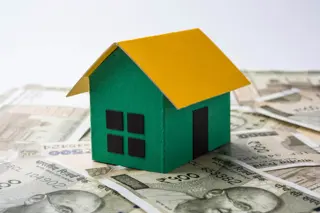Navigating Government Incentives for Affordable Housing in Bhubaneswar
 India’s affordable housing crisis has led to innovative solutions, with Bhubaneswar standing out for public-private partnerships and targeted subsidies. This guide breaks down key government programs, financial benefits, and steps to access affordable housing in Odisha’s capital.
India’s affordable housing crisis has led to innovative solutions, with Bhubaneswar standing out for public-private partnerships and targeted subsidies. This guide breaks down key government programs, financial benefits, and steps to access affordable housing in Odisha’s capital.
1. Understanding PMAY Integration
The Pradhan Mantri Awas Yojana (PMAY) is central to federal support for housing affordability. Under Odisha’s Policy for Housing for All in Urban Areas, PMAY subsidies lower homeownership costs for Economically Weaker Sections (EWS) and Lower-Income Groups (LIG):
- Subsidy Structure: EWS beneficiaries receive up to ₹2.3 lakh per unit under PMAY, available through participating housing projects.
- Income Eligibility:
- EWS: Annual income ≤ ₹3 lakh
- LIG: Annual income ₹3–6 lakh
- Relies on self-declared affidavits and BPL (Below Poverty Line) status.
- Project Models:
- In-situ slum redevelopment (e.g., Satyanagar Shantipalli’s 1,300-unit project)
- Affordable housing complexes like Buddha Vihar Chandrasekharpur (820 units).
2. Financial Incentives for Buyers
Beyond PMAY, state and federal policies offer layered benefits:
Subsidies and Grants
- Cross-Subsidization: Developers build commercial units alongside EWS housing, using profits to offset affordable unit costs.
- Interest Subsidies: PMAY allocates 4% interest subsidy on home loans depend on eligibility and criteria.
- Slum Rehabilitation: In-situ projects (like Keshari Residency) provide free/low-cost housing to slum dwellers via government partnerships.
Tax Breaks
- Stamp Duty Discounts: Reduced registration fees for PMAY beneficiaries in Odisha.
- GST Benefits: Concessional GST rates on affordable housing units (subject to project compliance).
- Additional FAR/FSI: Developers gain higher Floor Space Index/Floor Area Ratio for incorporating EWS units, indirectly reducing buyer costs.
3. Application Steps and Prioritization
First-time buyers need to navigate multiple tiers:
- Eligibility Check:
- Verify income category (EWS/LIG) via self-certified income proof.
- Select PMAY-approved projects through Bhubaneswar Development Authority (BDA) portals.
- Document Preparation:
- Aadhaar card, income certificates, BPL cards.
- Loan pre-approval from PMAY-linked financial institutions.
- Project Selection:
- Prioritize BDA-partnered developments providing 5-year structural warranties and maintenance reserves.
- Example: Subudhipur’s Barunei Enclave offers 342 EWS units with integrated amenities like dispensaries and libraries.
- Loan Facilitation:
- Attend financial health check-ups organized by developers or IFC partners.
- Seek assistance from urban local bodies like BDA for loan applications.
4. Key Developer Obligations
To ensure quality, Bhubaneswar mandates:
- Warranty Periods: Concessionaires must address structural defects within 5 years post-handover.
- Maintenance Funds: Developers allocate $500,000 (or INR equivalent) for ongoing upkeep, managed via interest accrual.
- Social Infrastructure: Projects must include water supply systems, community halls, and healthcare facilities.
5. Challenges and Pro Tips
Common Hurdles
- Limited Urban Land: Most EWS projects are peri-urban, requiring buyers to evaluate commute costs.
- Developer Reliability: Research SPV (Special Purpose Vehicle) track records for projects like Paramitra Smart Infra.
Strategic Advice
- Leverage PPP Models: Government-private partnerships often offer better infrastructure integration.
- Apply Early: BDA project allocations follow transparent bidding, so timely registration enhances success odds.
By aligning PMAY subsidies, developer incentives, and BDA oversight, Bhubaneswar sets a precedent for scalable affordable housing. Prospective buyers should prioritize policies offering long-term maintenance guarantees and integrated community amenities to maximize value.